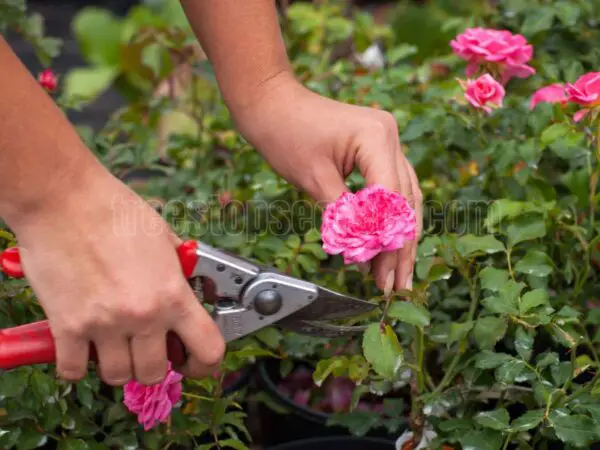Pests in plants can be a gardener's worst nightmare. They sneak in, causing damage and stress to your beloved greenery. While some pests are harmless, others can wreak havoc on your plants, leading to stunted growth or even death. Identifying these pests early is crucial for effective control.
Ignoring the signs of infestation can lead to bigger problems down the line. Healthy plants thrive in a pest-free environment. This post will explore common pests, their impact on plants, and practical solutions to keep your garden flourishing. Learn how to protect your green space and enjoy a vibrant garden without the worries of pests.
Key Takeaways
-
Identify common houseplant pests like aphids, spider mites, and mealybugs to take action quickly.
-
Use prevention strategies such as proper watering and maintaining humidity to keep pests away.
-
Explore non-chemical control methods, like introducing beneficial insects or using neem oil, for a safer approach.
-
If necessary, apply chemical control options carefully, following all safety guidelines to protect your plants and environment.
-
Learn specific management techniques for different pests to effectively target the problem and restore plant health.
-
Regularly inspect your plants for early signs of infestation to maintain a healthy indoor garden.
Common Houseplant Pests
Identifying Common Pests
Aphids, spider mites, and mealybugs are common pests that affect houseplants.
Aphids are small, pear-shaped insects. They vary in color from green to black. Spider mites are tiny and often red or yellow. They create fine webbing on plants. Mealybugs look like small white cottony masses on leaves and stems.
Early detection is crucial. Noticing these pests quickly helps manage infestations before they spread.
Recognizing Pest Signs
Changes in plant health can indicate pest problems. Wilting leaves or discoloration may signal an issue.
Visible pests on leaves, stems, or soil show infestation directly. Sticky residue on leaves is another sign. This residue comes from feeding pests. Webbing on plants can also point to spider mites.
Major Plant Pests
Major pests include aphids, spider mites, and whiteflies. Each pest causes specific damage to plants.
Aphids suck sap from plants, weakening them. Spider mites cause leaf spots and yellowing due to their feeding habits. Whiteflies can lead to stunted growth by infesting the undersides of leaves.
Understanding the life cycles of these pests helps in managing them effectively. For example, aphids reproduce quickly, leading to rapid population growth.
Less Common Pests
Less common pests include thrips and fungus gnats. Thrips are slender and can cause silver streaks on leaves. Fungus gnats are small flies that thrive in moist soil.
These pests pose unique challenges. Thrips can be hard to spot due to their size and speed. Fungus gnats lay eggs in damp soil, making it difficult to control them.
Vigilance is key for all plant owners. Keeping an eye out for these pests helps prevent larger issues later on.
Prevention Strategies
Effective Prevention Methods
Implement proper growing conditions to minimize pest attraction. Healthy plants are less likely to attract pests. They thrive in the right light, temperature, and humidity. Inspect new plants thoroughly before introducing them to existing collections. Look for visible pests or signs of damage. This step helps ensure that no unwanted guests enter your home.
Utilize isolation techniques for new plants to prevent pest spread. Keep them separate from your other plants for at least two weeks. This time allows you to monitor for any signs of pests before they can affect your existing collection.
Best Practices for Prevention
Maintain cleanliness around plants to deter pests from settling. Remove dead leaves and debris regularly. These materials can harbor pests and diseases. Regularly wash plant leaves to remove dust and potential pest eggs. Use a gentle spray of water or a damp cloth. Clean leaves allow plants to breathe better and receive more light.
Use high-quality potting soil to reduce the risk of bringing pests indoors. Poor quality soil can contain hidden pests or diseases. Opting for sterile soil helps create a healthier environment for your plants.
Avoiding Infestations
Monitor plants regularly for early signs of pest activity. Check both the top and underside of leaves. Look for webbing, discoloration, or sticky residue, which might indicate a problem. Keeping cut flowers separate from houseplants can also prevent pest transfer. Flowers often attract insects that could harm houseplants.
Ensure home entry points are sealed to block pest access. Check windows, doors, and vents for gaps. Sealing these areas can significantly reduce the chance of pests entering your home.
Non-Chemical Control
Natural Pest Remedies
Neem oil serves as an effective natural solution for pest control. It disrupts the life cycle of many pests, making it harder for them to reproduce. Diatomaceous earth is another option. This powdery substance damages the exoskeletons of insects, leading to dehydration and death.
Homemade remedies can also help. Soap sprays are simple to make and can treat various infestations. Mix water with liquid soap in a spray bottle. Spray directly on affected plants. These non-toxic methods protect plant health while being safe for the environment.
Biological Control Methods
Introducing beneficial insects can significantly reduce pest populations. Ladybugs are a prime example. They feed on aphids, helping keep their numbers low. Another useful ally is nematodes. These microscopic worms target soil-dwelling pests like grubs and root weevils.
Biological controls offer several advantages in sustainable gardening. They promote a balanced ecosystem by encouraging natural predators. This approach reduces the need for chemical pesticides, which can harm beneficial organisms in the garden.
Cultural Control Techniques
Crop rotation is an essential practice in pest management. Changing the types of crops grown in a specific area disrupts pest life cycles. This method prevents pests from becoming established in one location.
Diversity in planting also helps combat pests. Mixing different plants can confuse pests and reduce their populations. Adjusting watering and fertilization practices strengthens plant resilience against infestations. Healthy plants are less likely to succumb to pest damage.
Timely pruning improves air circulation around plants. This reduces humidity, creating an unfavorable environment for many pests. Pruning also removes dead or infected plant parts, limiting habitat for pests.
Chemical Control
Safe Chemical Use
Reading pesticide labels is crucial for safe application. Labels provide important information on how to use the product properly. They include instructions on dosage, timing, and safety measures. Wearing protective gear is also essential when handling chemicals. Gloves, masks, and goggles protect against harmful exposure.
Applying pesticides during calm weather is advisable. Wind can cause drift, spreading chemicals to unwanted areas. This can harm beneficial insects or nearby plants. Choosing the right time and conditions ensures better control over pests.
Types of Pesticides
Pesticides can be categorized based on their active ingredients and target pests. Common types include insecticides for insects, fungicides for fungi, and herbicides for weeds. Each type targets specific problems in plants.
Understanding the difference between systemic and contact pesticides is important. Systemic pesticides are absorbed by the plant. They move through the plant’s tissues and provide longer-lasting protection. Contact pesticides only affect pests that come into direct contact with them. Knowing which type to use helps in effectively managing pest issues.
Selecting the right pesticide for specific pest problems is critical. Not all pesticides work for every pest type. Researching the pest's biology and behavior aids in making informed choices.
Application Tips
Applying pesticides in the early morning or late evening enhances effectiveness. During these times, temperatures are cooler, reducing evaporation and increasing absorption by plants.
Thorough coverage of all plant surfaces is vital for optimal results. Spraying both the upper and lower sides of leaves ensures that pests hiding there are targeted.
Regular follow-up applications may be necessary to maintain control over persistent pests. Monitoring plants after application helps determine if further treatment is needed.
Managing Specific Pests
Controlling Scales
Scale insects are small and often resemble tiny bumps on plant stems or leaves. They can be brown, gray, or green. To control these pests, insecticidal soap or horticultural oil works effectively. These treatments suffocate the scales and disrupt their life cycle. After treatment, regular monitoring is essential. Checking plants frequently helps prevent re-infestation.
Managing Mealybugs
Mealybugs are another common pest. They appear as small, white, cotton-like masses on plants. For manual removal, use cotton swabs dipped in alcohol. This method eliminates mealybugs without harming the plant. Consistent monitoring is crucial to catch new infestations early. Regular checks ensure that mealybugs do not return.
Spider Mite Control
Spider mites are tricky to spot at first. Look for fine webbing and stippling on leaves. These signs indicate an infestation. Increasing humidity around plants can deter spider mites from thriving. If populations grow too large, consider using miticides designed for spider mite control. These products target the pests effectively.
Whitefly Management
Whiteflies are small, white insects that cluster on the undersides of leaves. They can weaken plants by sucking sap from them. To manage whiteflies, yellow sticky traps help monitor and reduce their numbers. The bright color attracts whiteflies, trapping them effectively. Insecticidal soap also serves as a viable treatment option for infestations. It disrupts their feeding and helps eliminate them.
Closing Thoughts
Dealing with pests in your plants can be a hassle, but you have the tools to tackle this challenge. Understanding common houseplant pests and employing effective prevention strategies is key. Whether you choose non-chemical or chemical control methods, being proactive will keep your plants healthy and thriving.
Stay vigilant and monitor your plants regularly. Early detection makes all the difference. Share your experiences and tips with fellow plant lovers. Together, you can create a community that supports healthy growth and pest management. Don’t let pests ruin your green space—take action today!
Frequently Asked Questions
What are the most common pests found in houseplants?
Common houseplant pests include aphids, spider mites, mealybugs, and scale insects. These pests can damage plants by sucking sap, leading to stunted growth and yellowing leaves.
How can I prevent pests in my houseplants?
Prevent pests by maintaining healthy plants through proper watering, adequate light, and regular cleaning of leaves. Quarantine new plants for a few weeks before introducing them to your collection.
What are some non-chemical methods to control plant pests?
Non-chemical methods include using insecticidal soap, neem oil, or introducing beneficial insects like ladybugs. Regularly inspecting plants can also help catch infestations early.
When should I use chemical controls for pests?
Use chemical controls as a last resort when non-chemical methods fail. Always follow the manufacturer's instructions and apply treatments during cooler parts of the day to minimize plant stress.
How do I manage specific pests like spider mites?
To manage spider mites, increase humidity around your plants and spray them with water. Insecticidal soap or neem oil can also be effective in eliminating these pests.
Are there any natural remedies for treating pest infestations?
Yes, natural remedies include garlic spray, diatomaceous earth, and essential oils like peppermint or lavender. These options can deter pests without harming your plants.
Can houseplant pests affect my health?
While most houseplant pests pose no direct health risk, some can cause allergic reactions or respiratory issues. Keeping plants healthy minimizes pest problems and potential health concerns.
Image Source: Paid image from CANVA



